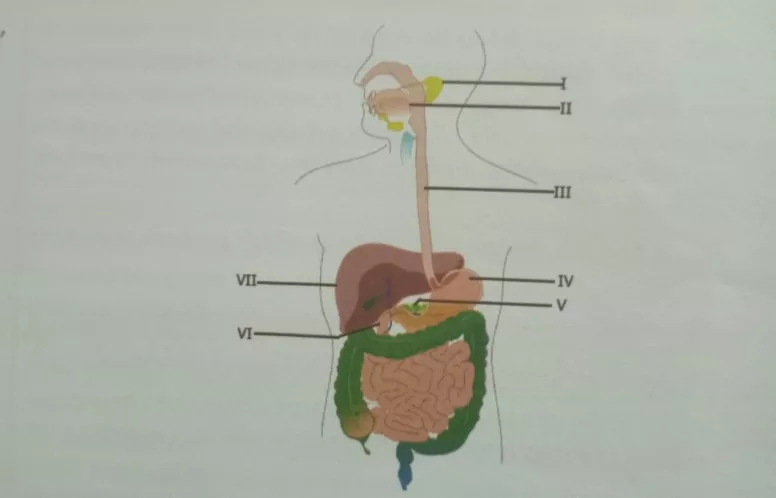Integrated Science Question by Topics | Reproduction and growth in plants, food and nutrition, dentition, feeding and digestion and respiratory systems

Integrated science question by topics
Integrated Science Question by Topics | Reproduction and growth in plants, food and nutrition, dentition, feeding and digestion and respiratory systems
Students must be examined after learning every topic. These integrated science question by topics are prepared to cover individual topics that teachers teach. The questions after every topics are as follows
Unit: Reproduction and growth in plants
Part 1: Objectives
Integrated science question by topics
1. After fertilization, this part of a plant eventually becomes the fruit
a. seed b. ovary c. sepal d. petal
2. What is the reproductive structure of a flowering plant
a. roots b. stem c. flower d. leaf
3. The leaf-like structure that protects the budding flower is called the
a. petal b. sepal c. anther d. style
4. The part of the plant that houses the ovule or egg is called the
a . ovary b. style c. petal d. filament
5. Flowering plants are also called
a. ferns b. angiosperms c. gymnosperm d. mosses
6. The part of a flower which is often scented to attract insects for pollination is
a. petal b. sepal c. carpel d. ovary
Part 2: Written
Integrated science question by topics
7. State the four main parts of a complete flower
8. i. Distinguish between budding and grafting
ii. Briefly explain how insects pollinate flowers
9. Use diagrams to explain epigeal and hypogeal germination
10. i. Draw a half flower and label the parts
ii. State the functions of three of the labelled parts
Unit: Food and nutrition
Part 1: Objective
Integrated science question by topics
1. Which of the following contains much energy
a. egg b. beef c. cowpea d. rice
2. Night blindness is caused by lack of
a. vitamin A b. calcium c. protein d. vitamin c
3. Which of the following food substances is a major source of vitamin A
a. bread b. palm oil c. orange d. maize
4. A person suffering from constipation should take in enough
a. protein b. fats c. vitamin d. roughage
5. Which of the following functions of protein in humans are correct
i. enzyme formation ii. formation of protoplasm leading to growth
iii. insulation of the body against heat
iv. repair and replacement of worn out cells
a. i and ii only b. ii, iii and iv only c. iii and iv only d. i, ii and iv only
Part 2: Written
Integrated science question by topics
6. State two ways each in which the following food substances are important to the human body
a. lipids b. roughage c. water
7. i. A boy weighs 45.5 kg and is 1.5 m tall. Calculate his body mass index
ii. Compare the boy’s body mass index to the standard values and state his standard
8. A few drops of a mixture of sodium hydroxide solution and copper II tetraoxosulphate (CuSO4) solution were added to a sample of urine in a test tube. State two possible results of the test.
9. i. What is malnutrition
ii. State three effects of malnutrition
Unit: Dentition, feeding and digestion in mammals
Part 1: Objectives
Integrated science question by topics
1. One reason for brushing teeth regularly is to
a. reduce the amount of saliva in the mouth b. remove dead cheek cells from the mouth
c. dilute the alkaline content of saliva d. reduce bacterial activity in the mouth
2. The type of teeth used for biting and cutting are the a. incisors b. canines c. premolars d. molars
3. What food substance does amylase act on a. oil b. protein c. carbohydrates d. glucose
4. Briefly define the following terms a. digestion b. ingestion c. absorption d. assimilation
Part 2: Written
5. a. name the end product of the process of digestion
b. Name the structure in the small intestine that enhances absorption of digested food substances
6. a. Distinguish between dentition and diet
b. Give three differences between the dentition of a herbivore and that of a carnivore
7. a. State 4 ways by which one can take good care of the teeth
b. State the functions of the following i. enamel ii. dentine iii. periodontal membrane
c. State three importance of bile to humans
Unit: Respiratory system | Integrated science question by topics
Part 1: Objectives
1. Which structure is enclosed in the thorax
a. lungs b. diaphragm c. liver d. kidney
2. What is the name of the muscle that are involved in the movement of the ribs
a. cardiac muscle b. intercostal muscles c. ciliary muscles d. biceps and triceps muscles
3. What is the main product of anaerobic respiration in yeast cells
a. water b. lactic acid c. ethanol d. butanol
Part 2: Written
4. a. Define respiration
b. Name one organ in humans responsible for respiration
c. What is breathing
5. Briefly explain the following terms
a. Inhalation b. Exhalation
c. State three actions which occur in each of the above processes in mammals
6. Give five differences between inhalation and exhalation
7. Compare the composition of inhaled air with that of exhaled air
8. a. State where the exchange of gases takes place in the lungs
b. Briefly describe how gas exchange takes place in the lungs
Post Disclaimer
The information contained in this post is for general information purposes only. The information is provided by Educative News and while we endeavour to keep the information up to date and correct, we make no representations or warranties of any kind, express or implied, about the completeness, accuracy, reliability, suitability or availability with respect to the website or the information, products, services, or related graphics contained on the post for any purpose.








